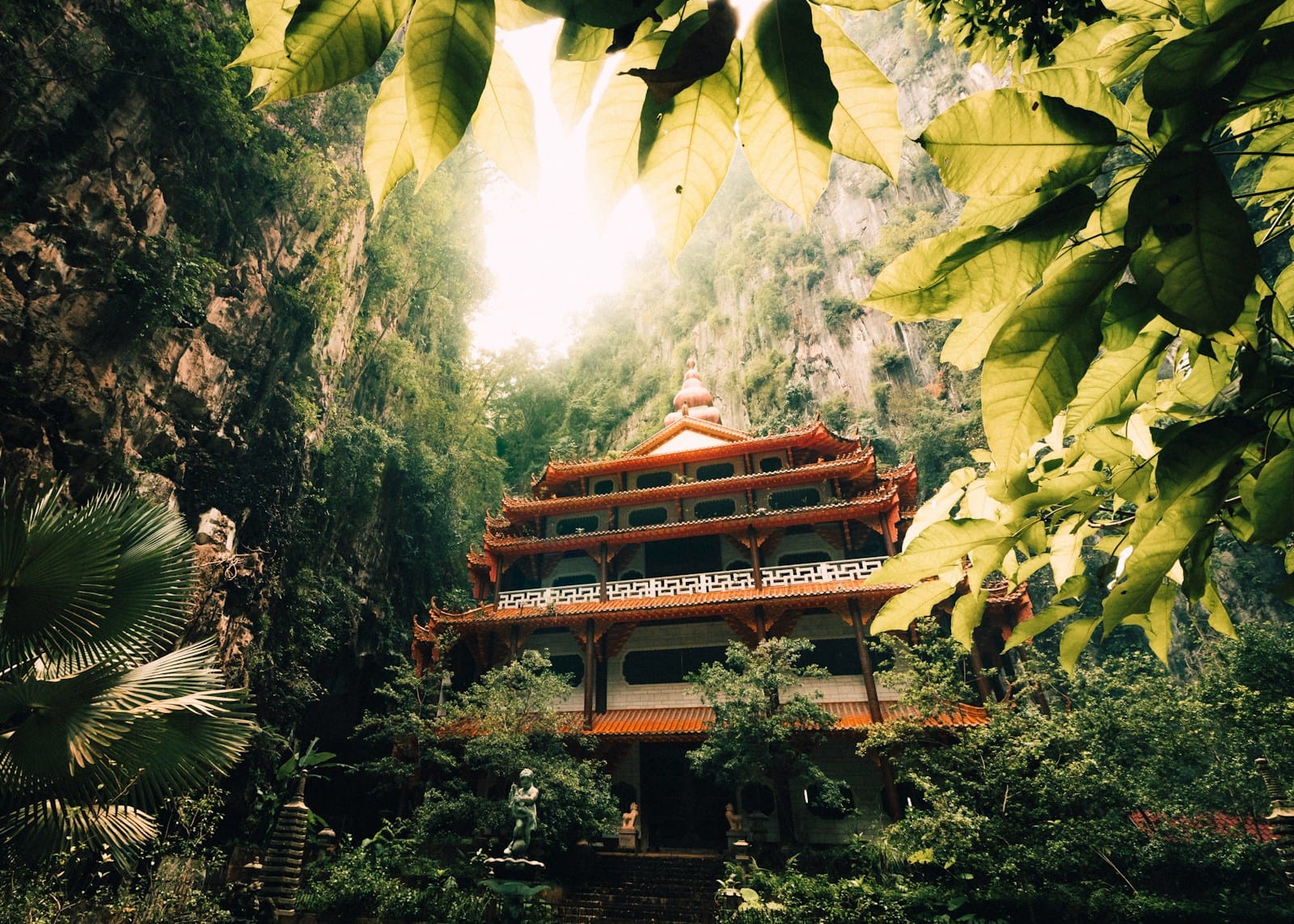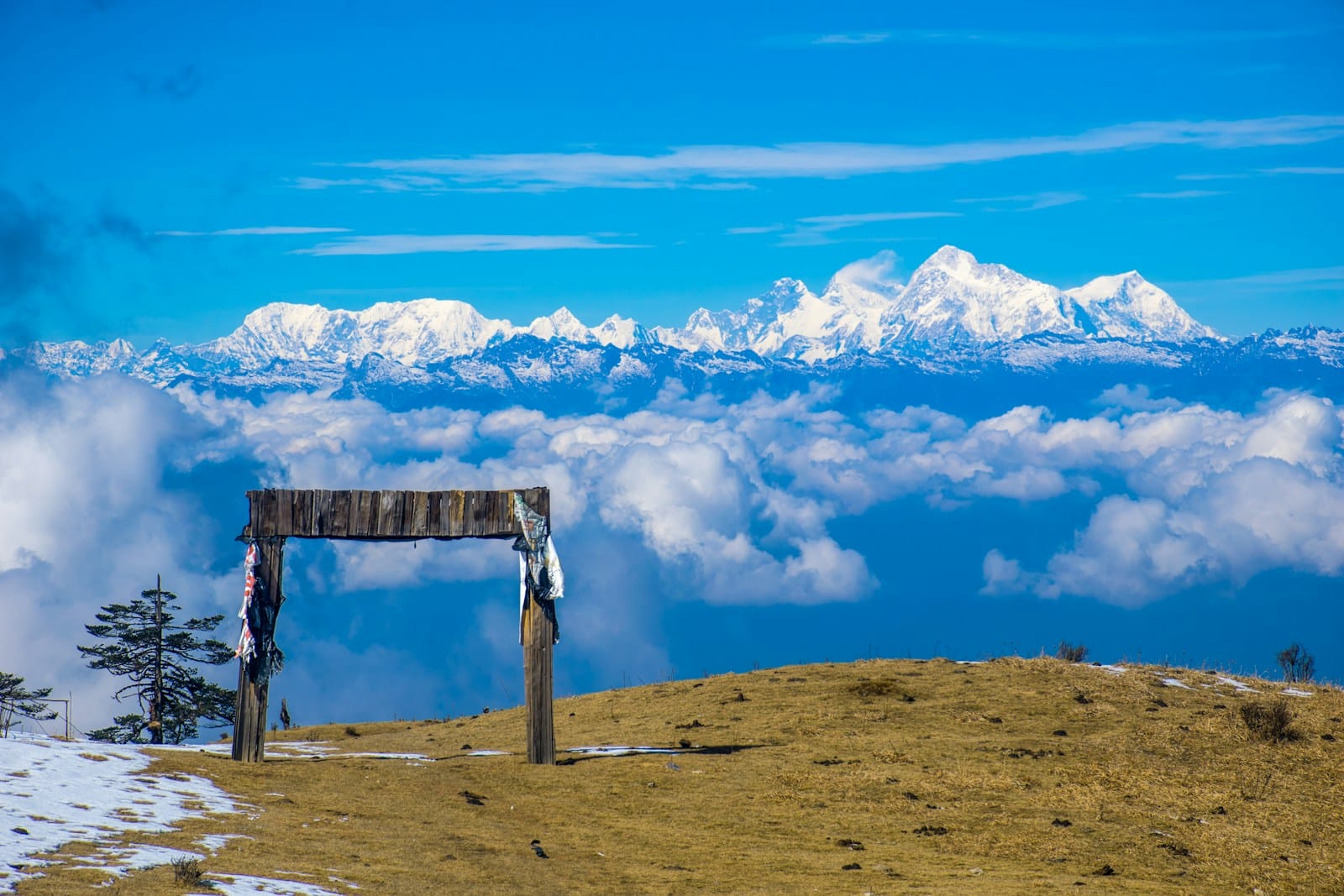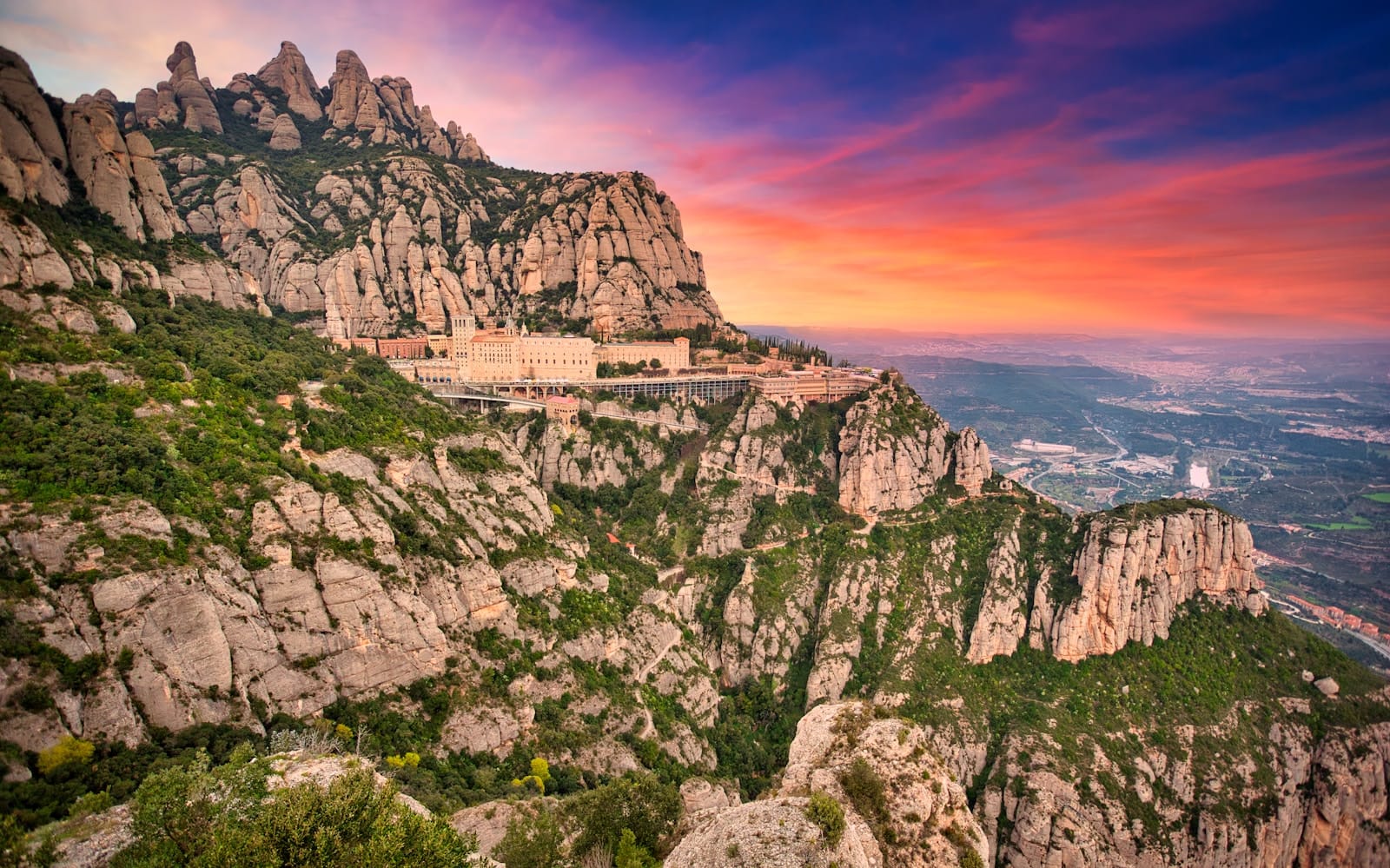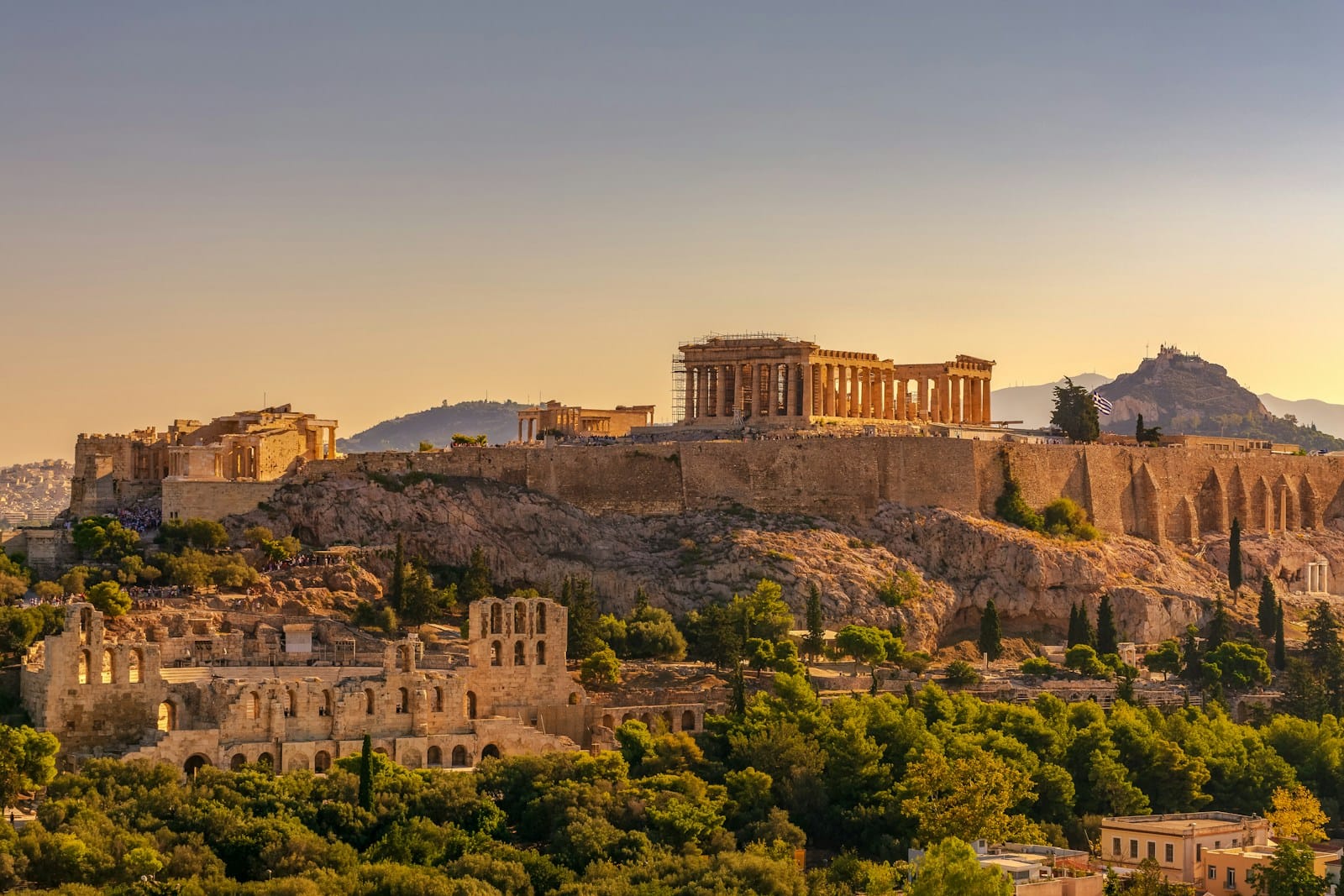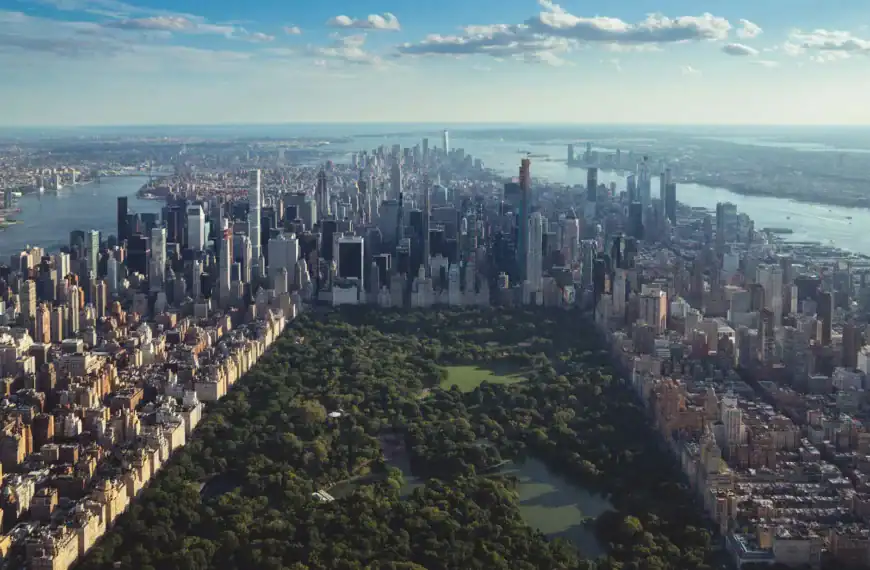Malaysia Travel Guide: Asia’s Cultural Crossroads of Flavor and Adventure
Intro to Malaysia Travel Guide
Malaysia is where Southeast Asia’s most vibrant cultures, landscapes, and flavors come together — seamlessly blending Malay, Chinese, Indian, and Indigenous influences into one unforgettable journey. From steamy jungle highlands to white-sand beaches, from buzzing night markets to sacred mosques, it’s a land of color, complexity, and contrast.
Start planning your journey with our complete Malaysia tour guide — discover dynamic cities, island escapes, mountain trails, and some of the best food on the planet.
States and Federal Territories to Explore in Malaysia
Johor | Kedah | Kelantan | Kuala Lumpur | Labuan | Malacca | Negeri Sembilan | Pahang | Penang | Perak | Perlis | Putrajaya | Sabah | Sarawak | Selangor | Terengganu
💡Quick Facts:
Destination: Malaysia
Continent: Asia
Country: Malaysia
Capital: Kuala Lumpur
Regions: Peninsular Malaysia, East Malaysia (Sabah & Sarawak)
Area: 330,803 km²
Population: ~33.5 million
Density: ~101/km²
Official Language: Malay (Bahasa Malaysia)
Regional Languages: English, Mandarin, Tamil, Iban, Kadazan-Dusun
Currency: Malaysian Ringgit (MYR)
Time Zone: Malaysia Time (UTC+8)
Known For: Petronas Towers, Langkawi beaches, Borneo rainforests, UNESCO sites (George Town, Melaka, Kinabalu Park)
Airports: Kuala Lumpur International (KUL), Penang (PEN), Kota Kinabalu (BKI), Kuching (KCH), Langkawi (LGK)
Climate: Equatorial; hot and humid year-round with monsoon seasons
🛂Arrival Info:
Entry: Visa-free entry (14–90 days) for 160+ nationalities including EU, UK, US, Australia, Japan.
eVisa/eNTRI: Available for China, India, and select countries. Immigration Malaysia for updates.
Stay Limits: 30–90 days typical for tourists. Passport must be valid 6+ months.
🏥Health Info:
Vaccines: Routine vaccines + Hepatitis A, Typhoid; Japanese Encephalitis if rural/long-term.
Risks: Dengue, chikungunya, malaria (Borneo interiors), rabies (rare).
Hospitals: Modern facilities in Kuala Lumpur, Penang, Johor Bahru; English widely spoken.
Insurance: Essential for evacuation/remote areas (e.g., Sabah jungles, diving islands).
🚑 Check travel insurance options for travel emergencies, delays, and medical needs abroad — Get coverage here
💉 Stay Informed with Official Updates: WHO – International Travel & Health | CDC – Travel health updates
🚨Travel Advisory:
General: Malaysia is safe for tourists. Petty theft in cities and tourist hubs possible.
Regional Notes: Eastern Sabah occasionally faces security advisories (piracy/kidnapping risk near Sulu Sea).
Natural Hazards: Flooding during heavy monsoons, haze from regional forest fires.
🌍Track Real-Time Official Updates: US Travel Advisory | UK Foreign Travel Advice | Government of Canada | NZ SafeTravel
🥳Holidays:
Hari Merdeka (Independence Day): Aug 31.
Hari Raya Aidilfitri: Dates vary; major Islamic festival.
Chinese New Year: Jan/Feb, nationwide celebrations.
Deepavali (Diwali): Oct/Nov, Hindu festival.
Hari Gawai: June 1–2, harvest festival in Sarawak.
Malaysia Day: Sept 16, marks formation of Malaysia.
💰Visitor Info:
Currency: Ringgit; ATMs common, cards accepted in cities. Cash preferred in markets/rural areas.
Costs:
Budget: $30–50/day
Mid-range: $60–100/day
Luxury: $200+ per day (resorts, diving packages)
Tipping: Not obligatory; rounding up or 10% at restaurants is appreciated.
Tourist Tax: MYR 10 per room/night at hotels for foreigners.
🛫Airports:
Kuala Lumpur International Airport (KUL):
Type: Major international hub (KLIA & KLIA2 terminals)
Distance from city: ~55 km (~34 mi)
Transport: KLIA Ekspres train (28 min), taxis, buses
Other Key Airports:
Langkawi (LGK) – tourism hub
Penang (PEN) – northern Peninsular gateway
Kota Kinabalu (BKI) – Sabah/Borneo access
Kuching (KCH) – Sarawak/Borneo access
Johor Bahru (JHB) – near Singapore border
🧳 Delayed or canceled flight? Check if you’re eligible for compensation
🚍Transport:
Domestic Flights: Frequent, affordable via AirAsia, Batik Air, Firefly.
Rail: KTM (Peninsular Malaysia), ETS high-speed between KL, Ipoh, Penang.
Buses: Extensive intercity network; cheap and reliable.
Urban Transit: KL has LRT, MRT, monorail; Grab ride-hailing widely used.
Driving: Left-hand traffic; International Driving Permit required.
🚗 Book reliable airport transfers and in-city rides in advance. Reserve your ride here
🛰️Connectivity:
SIM/eSIM: Maxis, CelcomDigi, U Mobile offer strong coverage.
Wi-Fi: Reliable in hotels/cafes; patchy in remote islands/jungle.
Roaming: Regional ASEAN roaming available; eSIMs popular.
🛜 Stay connected abroad with affordable eSIM data packs. Get your eSIM here
📜Laws & Etiquette:
Religion: Predominantly Muslim; dress modestly in mosques/temples.
Alcohol: Legal but expensive; banned in Kelantan & Terengganu (Muslim-majority states).
Drugs: Extremely strict penalties, including death penalty.
LGBTQ+: Limited acceptance; public displays discouraged.
Social Norms: Remove shoes before entering homes/temples; use right hand when giving/receiving.
👮Emergency Info:
Emergency Numbers: 999 (police/ambulance/fire).
Tourist Police Hotline: +60 3 2115 9999.
Major Hospitals: Gleneagles (Kuala Lumpur), Penang Adventist, Sabah Medical Centre.
Embassies: Most located in Kuala Lumpur.
🏛️ Use embassy locator tools: Embassies Worldwide
🌞Weather:
West Coast (Peninsular): Wettest Apr–Oct (southwest monsoon).
East Coast (Peninsular): Wettest Nov–Feb (northeast monsoon).
Borneo: Rainfall year-round, drier Mar–Oct.
Temps: Equatorial, 26–32°C year-round; humid.
🌦️ Stay prepared—check the weather forecast for your destination — Weather Forecast
Malaysia by Region – Where to Go
Malaysia is divided between Peninsular Malaysia and Malaysian Borneo, each offering distinct travel experiences.
Kuala Lumpur & Central Peninsular
The capital region blends futuristic towers and historic quarters. Kuala Lumpur is your starting point — home to the Petronas Towers, Batu Caves, and lively Bukit Bintang nightlife. Nearby, Putrajaya stuns with Islamic architecture and lake views.
West Coast (Penang, Langkawi, Perak)
The west coast is your route to UNESCO history, beach islands, and jungle interiors. Penang offers cultural immersion and famous street food in George Town. Langkawi is the tropical getaway, while Ipoh surprises with cave temples and coffee culture.
East Coast (Terengganu, Kelantan, Pahang)
For serene beaches, authentic culture, and slower rhythms, explore the east coast. Perhentian Islands and Redang are snorkeling and diving paradises. Kuantan offers batik, beaches, and local crafts, while Kota Bharu reveals Kelantanese traditions.
The Highlands (Cameron Highlands & Genting)
Malaysia’s highland retreats offer cool air and rolling tea plantations. Cameron Highlands is perfect for nature walks, strawberry farms, and colonial nostalgia. For contrast, Genting Highlands combines mountain views with casinos and indoor theme parks.
Southern Malaysia (Malacca, Johor)
Malacca (Melaka) is a history-rich city showcasing Dutch, Portuguese, and Malay heritage — walk the riverfront, visit museums, and shop Jonker Street. Johor Bahru, across from Singapore, is fast-growing with malls, theme parks, and urban energy.
Malaysian Borneo (Sabah, Sarawak, Labuan)
Wild and adventurous, Borneo offers rainforest treks, rare wildlife, and Indigenous culture. In Sabah, hike Mount Kinabalu and meet orangutans in Sepilok. In Sarawak, explore caves, longhouses, and national parks like Bako or Gunung Mulu.
Top Places to Visit in Malaysia
These destinations show Malaysia’s vast diversity, from cities and islands to jungles and mountain peaks.
Cultural Capitals
George Town (Penang) – A UNESCO site filled with murals, mansions, and hawker stalls.
Kuala Lumpur – Iconic skyline meets multicultural neighborhoods like Chinatown and Little India.
Malacca – A living museum of colonial and local history with riverfront cafés and temples.
Island Escapes
Langkawi – Duty-free island with beaches, waterfalls, and a sky bridge.
Perhentian Islands – Crystal waters, turtle beaches, and relaxed bungalows.
Tioman Island – Quiet dive paradise with jungle trails and coral reefs.
Nature Adventures
Cameron Highlands – Tea trails, forest hikes, and mountain air.
Kinabalu Park (Sabah) – UNESCO biosphere reserve with Malaysia’s tallest peak.
Bako National Park (Sarawak) – Coastal cliffs, rare plants, and proboscis monkeys.
Wildlife & Rainforest
Sepilok Orangutan Rehabilitation Centre – See endangered primates up close.
Danum Valley – One of the world’s oldest rainforests with night safaris and canopy walks.
Gunung Mulu Caves – Explore vast chambers, bat flights, and limestone pinnacles.
How to Choose Where to Go in Malaysia
Malaysia has something for every traveler — and its compact transport system makes it easy to combine different experiences.
- For Food & Culture:
Choose Penang or Malacca, paired with Kuala Lumpur for street food and festivals. - For Beaches & Islands:
Head to Langkawi (easy access), Perhentian Islands (snorkeling), or Tioman (diving). - For Nature & Hiking:
Explore the Cameron Highlands, hike Mount Kinabalu, or walk jungle trails in Bako or Danum Valley. - For Family Trips:
Combine Kuala Lumpur, Genting Highlands, and Langkawi for attractions and resorts. - For Wildlife Encounters:
Visit Sabah or Sarawak — especially Sepilok, Kuching, and Kinabatangan River for eco-experiences.
How to Get Around Malaysia
Malaysia has an extensive, affordable, and mostly reliable transport system.
Domestic Flights
With cities and islands spread out, low-cost carriers like AirAsia, Firefly, and Batik Air make flying fast and cheap.
- KUL is the hub; direct flights to Langkawi, Penang, Kota Kinabalu, Kuching, and more.
- Budget in advance for Borneo routes or popular islands during holidays.
Trains
- KTM ETS runs modern rail lines between Kuala Lumpur, Ipoh, and Penang.
- Slower KTM Komuter serves suburban routes, including Batu Caves and Seremban.
Buses & Coaches
- Long-distance buses (e.g., Aeroline, Plusliner) link all major towns.
- Buses are clean, comfortable, and frequent — especially west coast routes.
Grab & Ride-Sharing
- Grab is Malaysia’s Uber — essential for city transport, especially in KL, Penang, and Johor.
- Taxis exist but often require haggling unless using metered options.
Car Rentals
- Best for self-driving trips in Cameron Highlands, Langkawi, or rural Borneo.
- Roads are decent, but left-hand drive and local habits may surprise first-timers.
Travel Apps to Download:
- Grab – Ride-hailing
- Moovit – City transit planner
- Malaysia Airlines / AirAsia – Flights
- TNG eWallet / Boost – Cashless payments
Travel Budget & Costs in Malaysia
Malaysia is one of Asia’s best-value destinations — you’ll find excellent food, transport, and accommodation at every price point.
Budget (€25–40/day)
- Dorm beds or guesthouses: €5–15
- Local meals: €1.50–3
- Public buses, street food, and free museums
Mid-Range (€45–100/day)
- Boutique hotels: €25–60
- Restaurants or night markets: €4–10
- Domestic flights, guided day tours, Grab transport
Luxury (€120–250+/day)
- 4–5 star hotels: €80+
- Fine dining and resorts: €30+ meals
- Private tours, spa treatments, island transfers
Cost-Saving Tips
- Eat at hawker centers and mamak stalls
- Travel via buses or trains instead of flights (if time allows)
- Book domestic flights and stays early during school breaks
- Use ride-sharing over taxis and avoid peak hour surcharges
- Visit national parks with small entry fees (Bako, Kinabalu)
Best Time to Visit Malaysia
Malaysia is a year-round destination, but timing matters depending on region, monsoons, and activity.
West Coast (Kuala Lumpur, Penang, Langkawi)
Best time: November to April
This side of the peninsula stays drier during the northeast monsoon. It’s ideal for beach time in Langkawi or city adventures in Penang and KL.
East Coast (Perhentians, Redang, Terengganu)
Best time: March to October
Avoid November–February when monsoon rains shutter most resorts. Visit in late spring or summer for the clearest snorkeling waters and beach weather.
Highlands (Cameron, Genting)
Best time: March to September
Temperatures stay cool year-round, but it’s less rainy outside the October–February period. Bring layers — nights can dip below 15°C (59°F).
Malaysian Borneo (Sabah & Sarawak)
Best time: May to September
This is dry season for wildlife spotting, jungle trekking, and diving off Sipadan. Rain falls year-round, but storms are shorter in summer.
The best time to visit Malaysia depends on where you’re going — use this to plan regional pairings without getting caught in monsoon rains.
Must-See Experiences in Malaysia
These immersive, unforgettable things to do in Malaysia show why the country deserves more than just a stopover.
Wander George Town’s Street Art & Hawker Stalls
Track iconic murals like “Kids on a Bicycle”, then dive into Penang’s food scene — char kway teow, assam laksa, and cendol await.
Climb the Petronas Towers & Stroll KLCC Park
Go up to the skybridge for city views, then relax at the fountains, shopping malls, or nearby Aquaria.
Snorkel with Turtles in the Perhentian Islands
Jump into turquoise waters from your beach hut and spot turtles, clownfish, and coral — all minutes from shore.
Hike Mossy Forests in Cameron Highlands
Cool mountain air, winding trails, and surreal mossy trees await. Book a guided eco-walk or visit a tea plantation.
Spot Orangutans at Sepilok
See these gentle red-haired apes up close at the Sepilok Rehabilitation Centre, a world-leading sanctuary.
Attend Thaipusam at Batu Caves
Each January or February, watch thousands of Hindu devotees walk barefoot, pierce their bodies, and carry kavadis to this towering limestone shrine.
Trek to the Pinnacles at Gunung Mulu
A dramatic limestone landscape unlike anything else — accessible only via multiday trek and overnight camp.
Eat Night Market Dinner in Malacca
Try satay celup, onde-onde, and pineapple tarts on Jonker Street, buzzing every weekend with music and lights.
Scuba Dive at Sipadan Island
One of the world’s top dive sites — with deep walls, swirling barracuda, and frequent turtle sightings.
Ride the Langkawi SkyCab & SkyBridge
Hover over rainforests and cliffs on a cable car, then walk above the jungle on a dramatic curved bridge.
Book immersive Malaysia tours and experience unforgettable things to do in Malaysia — from sacred temple rituals and highland treks to floating markets and lakeside food adventures.
Best Travel Itineraries in Malaysia
Here are 3 sample routes to build your own perfect trip, based on different travel goals and timeframes.
1-Week Culture & City Escape
- Days 1–2: Kuala Lumpur – Petronas Towers, Batu Caves, Jalan Alor
- Days 3–4: Malacca – historical sites, river cruise, Jonker Street
- Days 5–7: Penang – George Town murals, hawker food, temples
10-Day Island + Nature Combo
- Days 1–2: Kuala Lumpur intro
- Days 3–6: Perhentian Islands – snorkeling, chill beach days
- Days 7–8: Cameron Highlands – tea farms, mossy forest
- Days 9–10: Return via Ipoh for food and cave temples
2-Week Malaysia & Borneo Adventure
- Days 1–3: Kuala Lumpur + day trip to Putrajaya
- Days 4–6: Langkawi or Redang for beach time
- Days 7–8: Fly to Kota Kinabalu – explore city and nearby islands
- Days 9–11: Kinabalu Park and Poring Hot Springs
- Days 12–14: Sepilok, Sandakan, or Danum Valley for wildlife
Choose the one that fits your travel style — and customize as you go.
Local Cuisine & Culinary Experiences
Malaysia is one of the great food destinations of Asia. Here’s what to eat — and where to find it.
Nasi Lemak
Coconut rice served with sambal, peanuts, egg, and anchovies. National dish — found everywhere from street stalls to airports.
Char Kway Teow
Flat rice noodles stir-fried with prawns, eggs, bean sprouts, and soy sauce — best eaten in Penang.
Roti Canai
Flaky Indian-influenced bread with dhal or curry. Mamak stalls often serve it with Milo or teh tarik.
Laksa
Varies by region — Assam laksa (sour, fishy, from Penang) vs Curry laksa (spicy coconut base, common in KL and Johor).
Satay
Grilled meat skewers served with peanut sauce — found at night markets across the country.
Hainanese Chicken Rice
Poached chicken with garlic rice and chili sauce — originally Chinese, now a Malaysian staple.
Durian
Love it or hate it — try it fresh, in ice cream, or as a crepe. The “king of fruits” reigns during June–August.
Dining Highlights
- Penang – Best for hawker culture and local specialties
- Malacca – Try Baba-Nyonya (Peranakan) cuisine like ayam pongteh
- Kuala Lumpur – Street food and upscale fusion restaurants
- Sabah – Jungle produce and seafood, especially in Sandakan
- Cameron Highlands – Strawberry farms, teas, and steamboat hotpots
Taste your way through Malaysia with food tours, night markets, and diverse regional dishes.
Travel Safety & Cultural Etiquette in Malaysia
Malaysia is safe, modern, and friendly, but some cultural and practical tips help things go smoother.
Safety
- Violent crime is rare; petty theft may occur in crowded areas
- Use Grab for safer, metered transport
- Tap water is not always potable — opt for bottled or boiled
Cultural Etiquette
- Dress modestly in rural areas and religious sites — cover shoulders and knees
- Remove shoes before entering homes and temples
- Avoid public displays of affection
- Use your right hand to give or receive items
- Ramadan: eating in public is fine in tourist zones, but be discreet elsewhere
Religion & Behavior
- Islam is the official religion, but Malaysia is multi-faith
- Be respectful near mosques, and avoid loud behavior
- Friday prayers affect mosque access and some local hours
Where to Go Next – Pair Malaysia with These Destinations
Malaysia is central to Southeast Asia — it connects easily to neighboring countries and island getaways.
- Thailand: Travel north to Hat Yai or fly to Phuket for beaches and temples.
- Singapore: Linked by train and bus — combine futuristic Singapore with Malaysia’s heritage cities.
- Indonesia (Sumatra or Bali): Direct flights from KL to Medan, Jakarta, or Denpasar for surf, temples, and volcanoes.
- Philippines: For a full beach arc — fly to Palawan or Cebu from Kota Kinabalu or Kuala Lumpur.
- Vietnam or Cambodia: For food and culture fans, combine KL with Ho Chi Minh City, Hanoi, or Siem Reap.
Combine Malaysia with these destinations:
- Singapore: Ultra-modern city just a 1-hour flight or 4-hour drive.
- Thailand: Cross by land from Penang or Langkawi.
- Indonesia: Visit Sumatra or Bali via short flights.
- Brunei & Philippines: Accessible from East Malaysia.
Final Planning Checklist for Malaysia
Use this checklist to prep efficiently for your Malaysia trip:
- Finalize route by region: west coast, islands, highlands, or Borneo
- Book domestic flights early for Langkawi, Sabah, or Sarawak
- Reserve island accommodations in advance during dry season
- Download apps: Grab, Moovit, TNG eWallet
- Confirm passport validity and visa-free duration (most get 30–90 days)
- Pack light clothes, but include modest outfits for mosques
- Bring power adapter (Type G, 240V)
- Arrange travel insurance with adventure coverage if jungle trekking or diving
- Carry mosquito repellent, especially in Borneo or highland areas
- Learn a few phrases in Malay — “terima kasih” means thank you!
Explore Malaysia with Confidence
Malaysia is more than a country — it’s a multicultural experience wrapped in rainforests, spiced in street food, and brimming with warmth. From the buzz of KL to the serenity of Redang, from mossy trails to coral reefs, this is Southeast Asia at its most dynamic and welcoming.
For more destination tips, curated travel ideas, and immersive itineraries, visit our homepage and get inspired for your next adventure.

